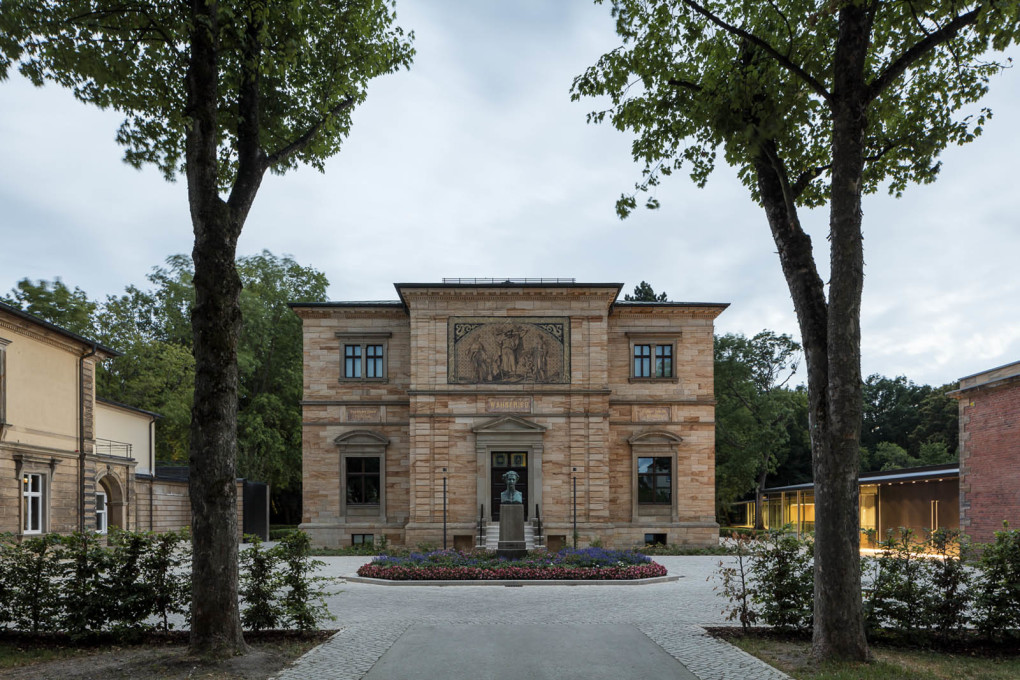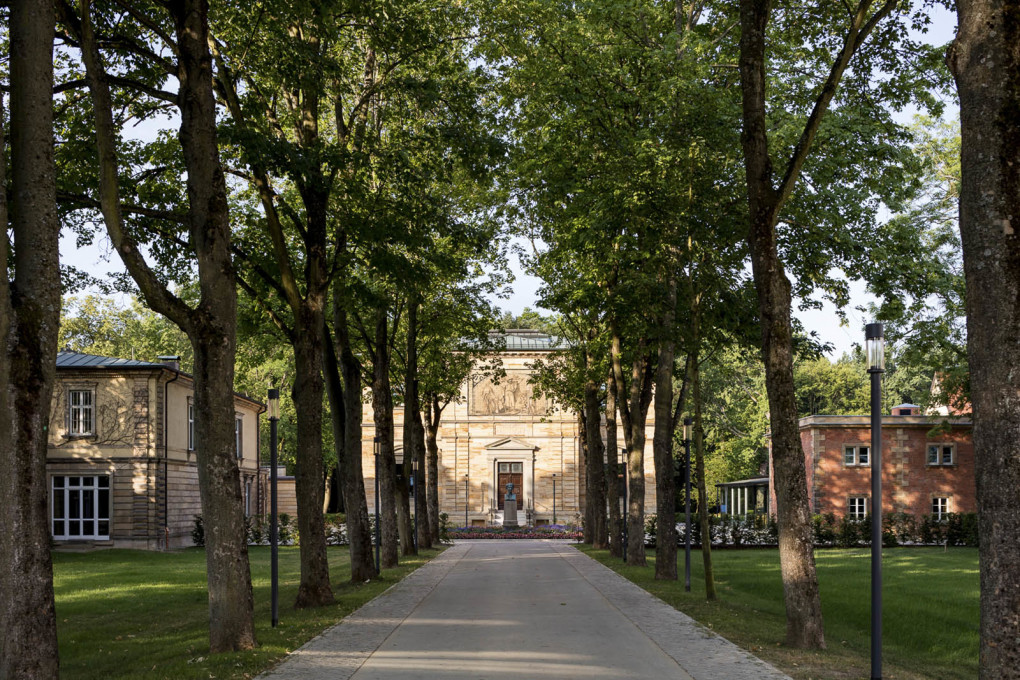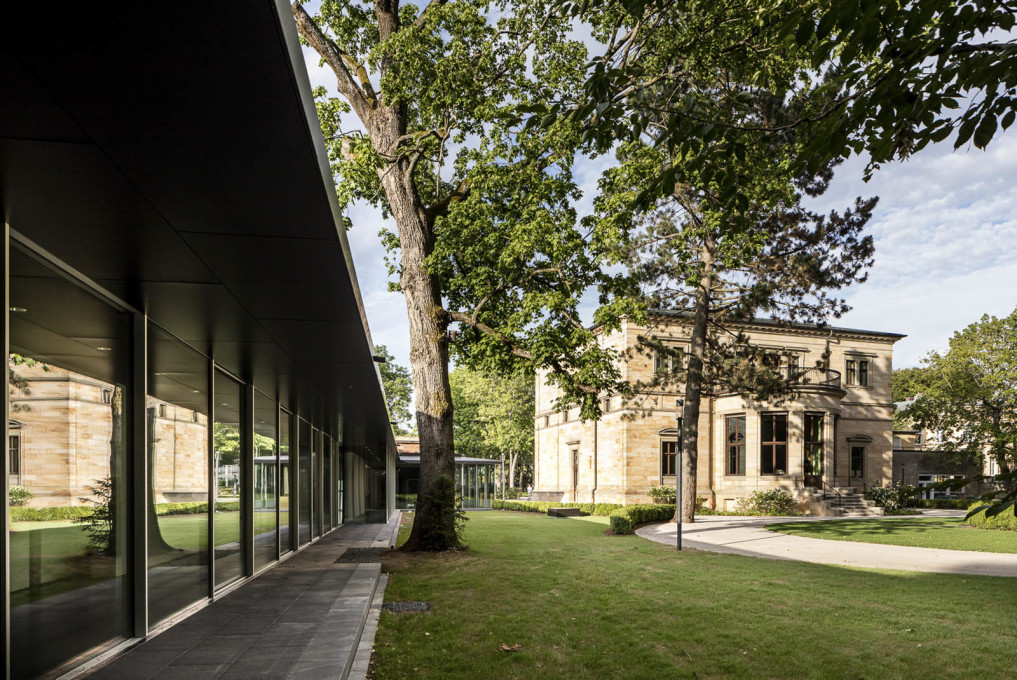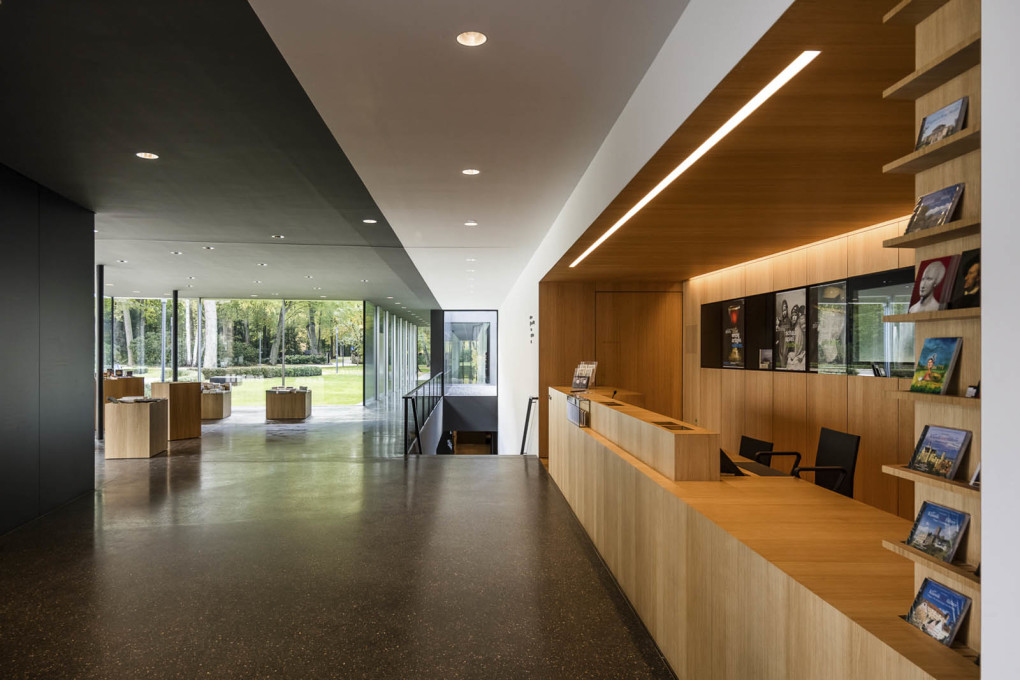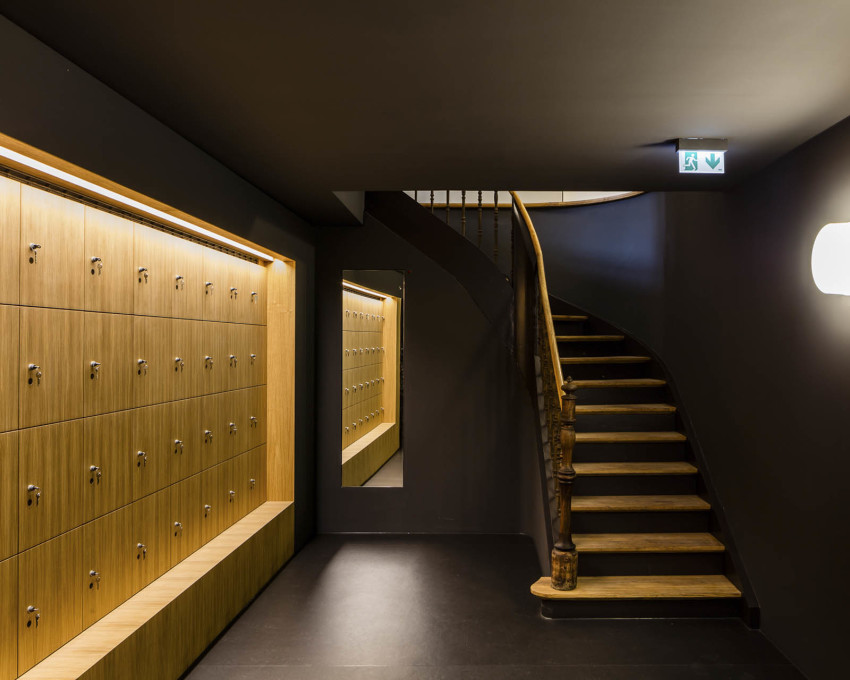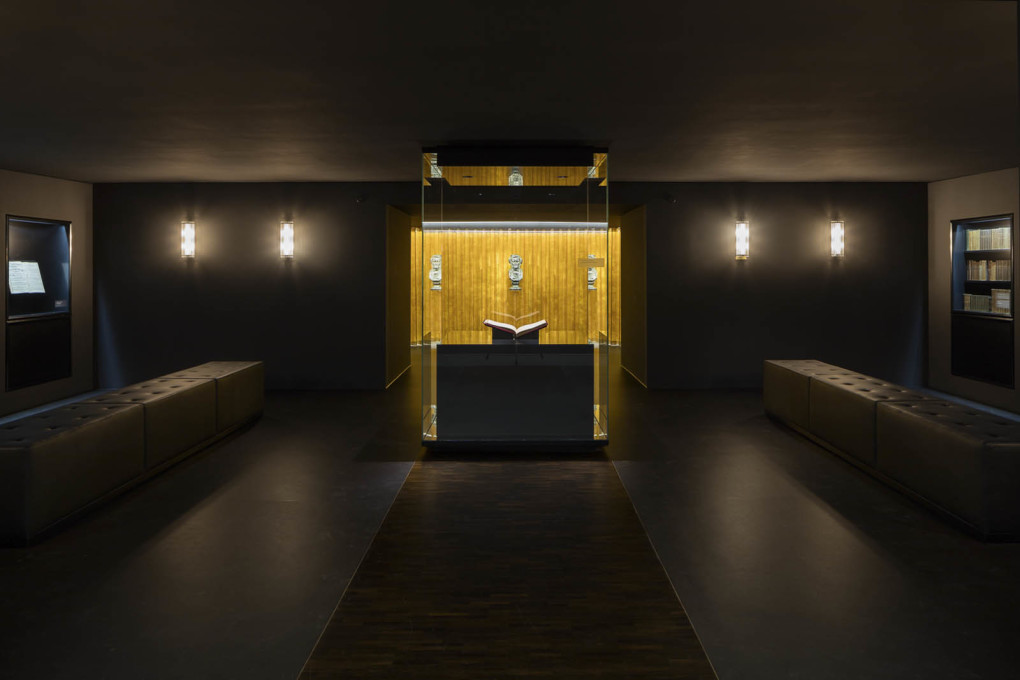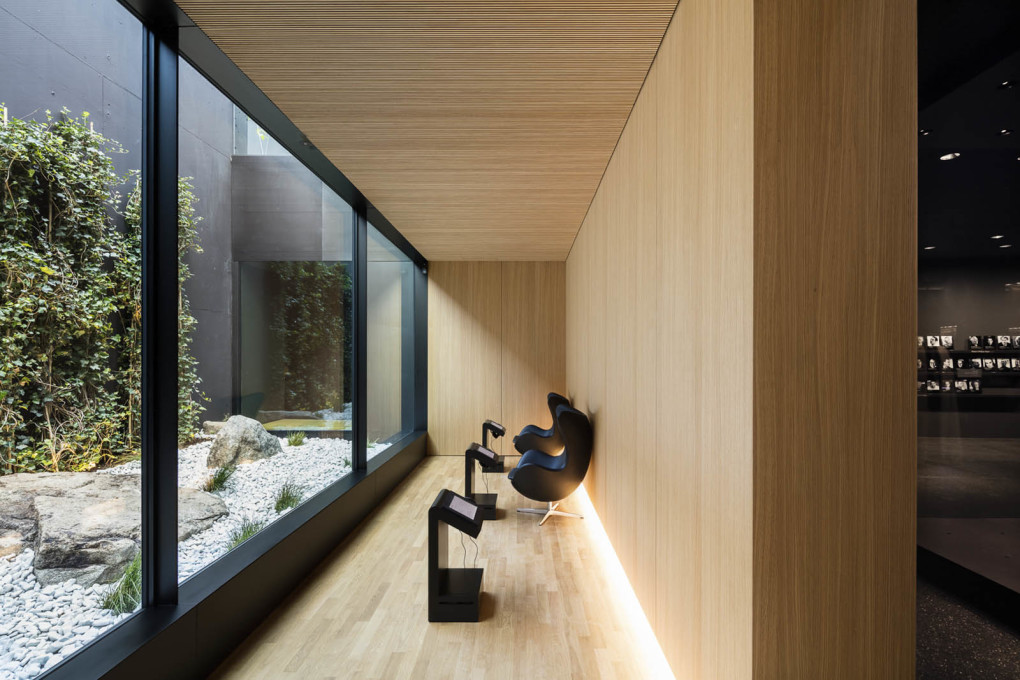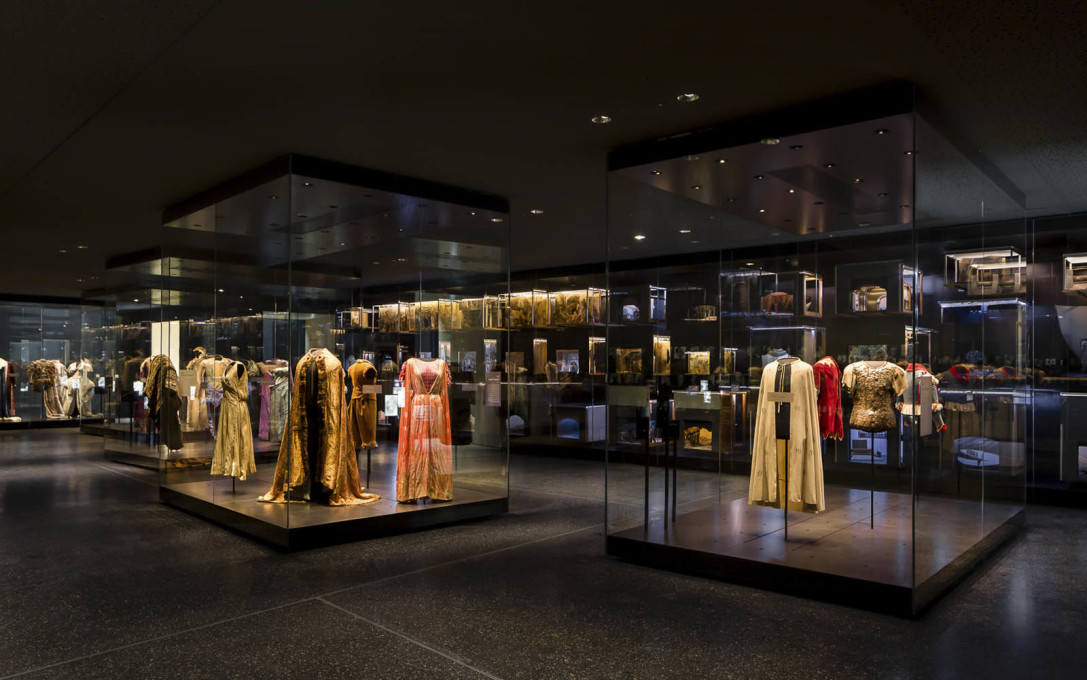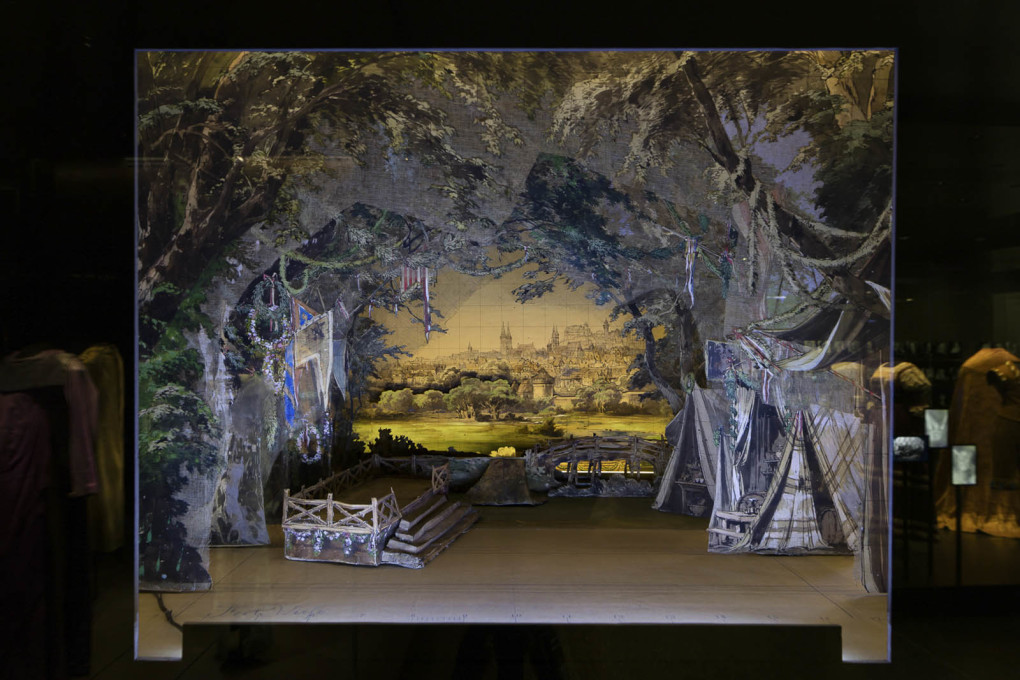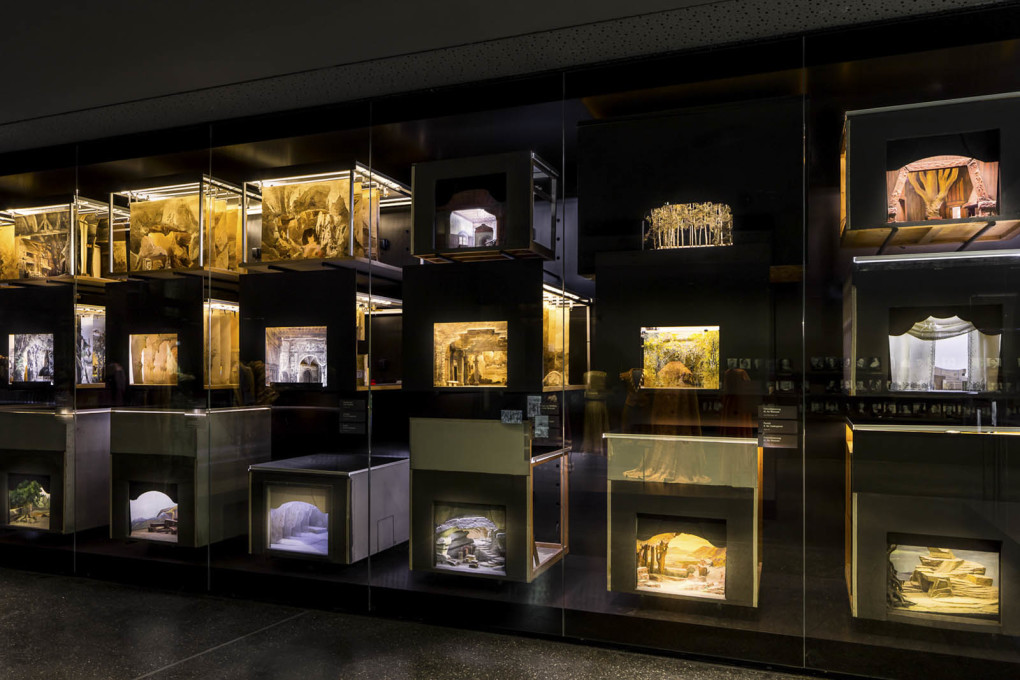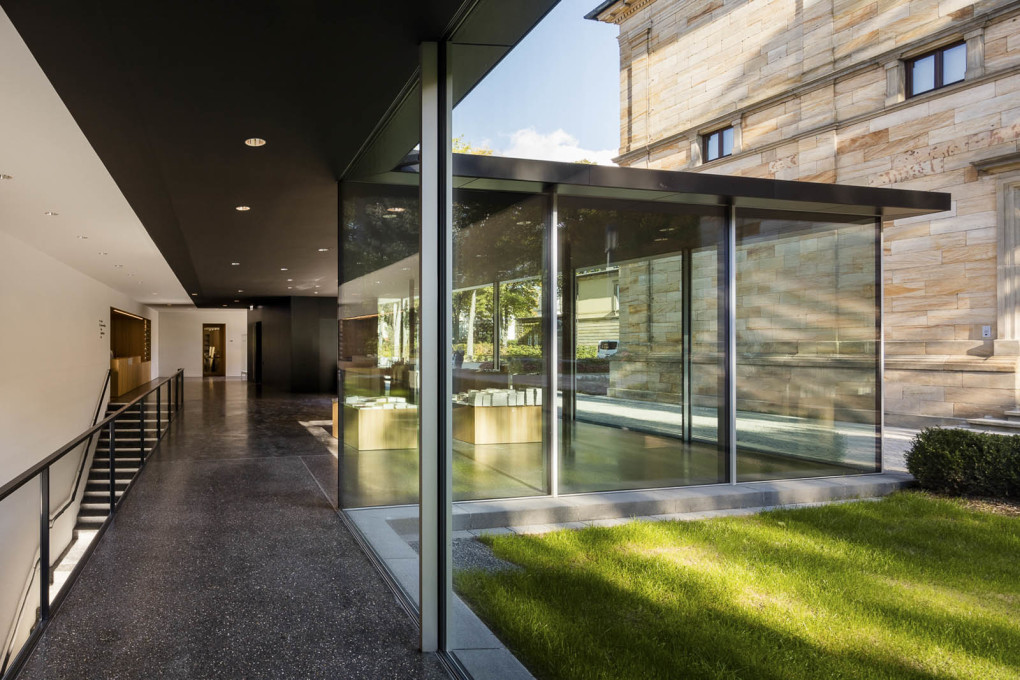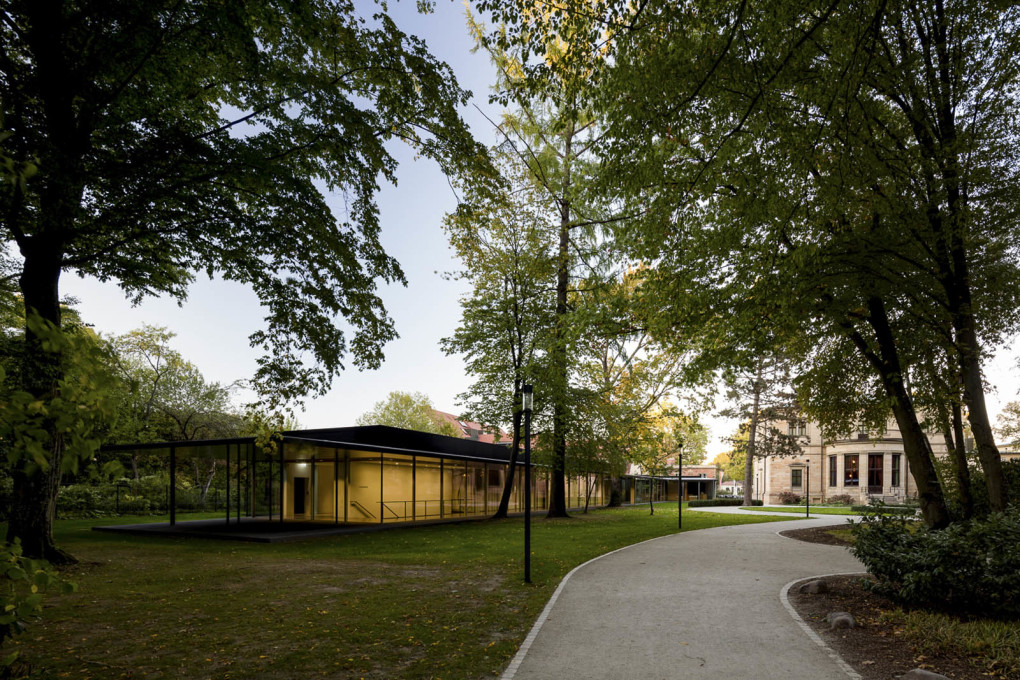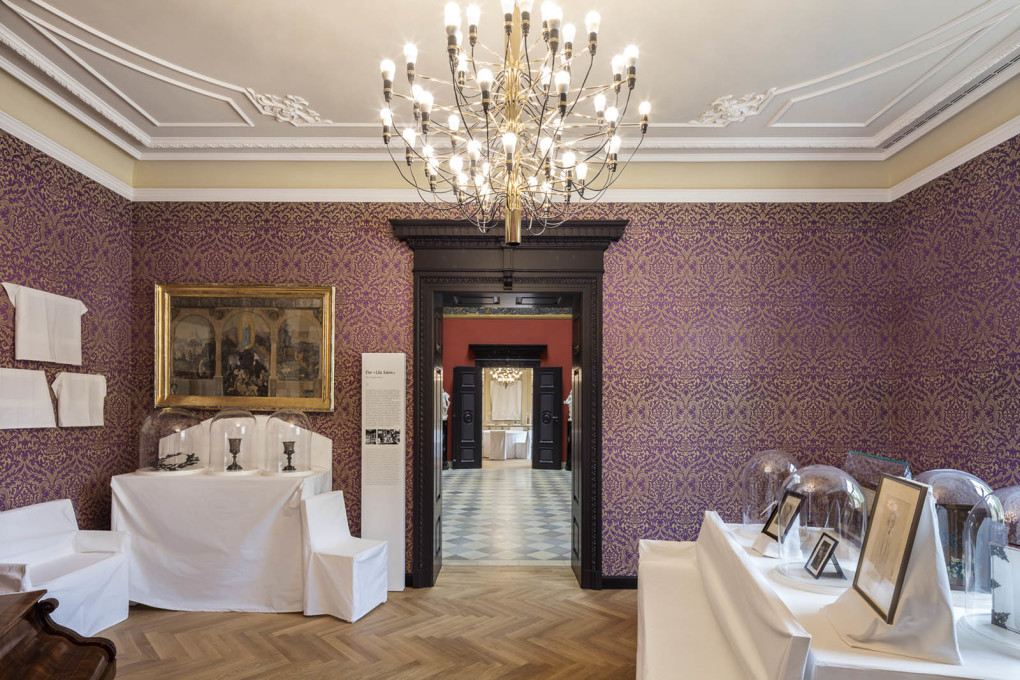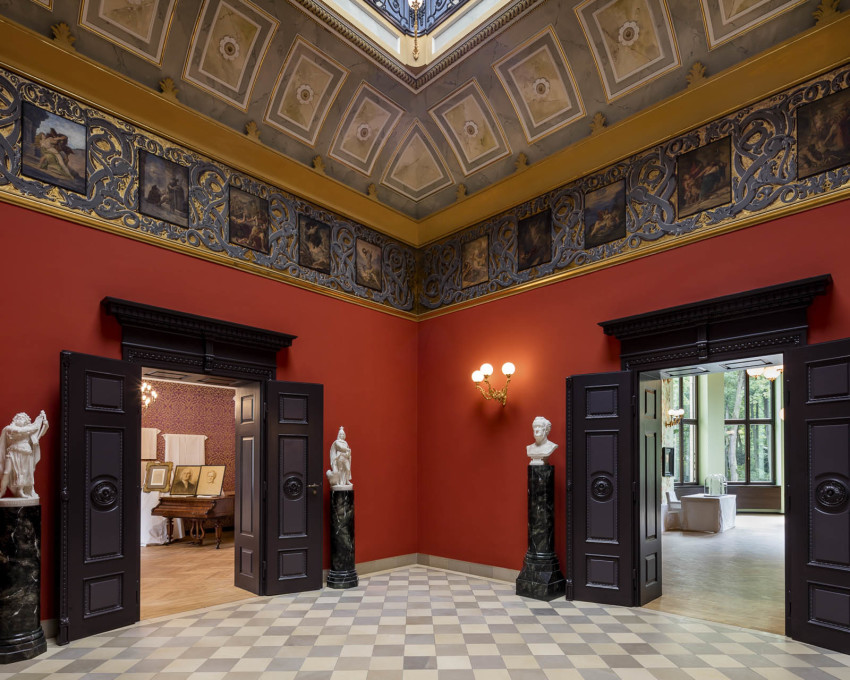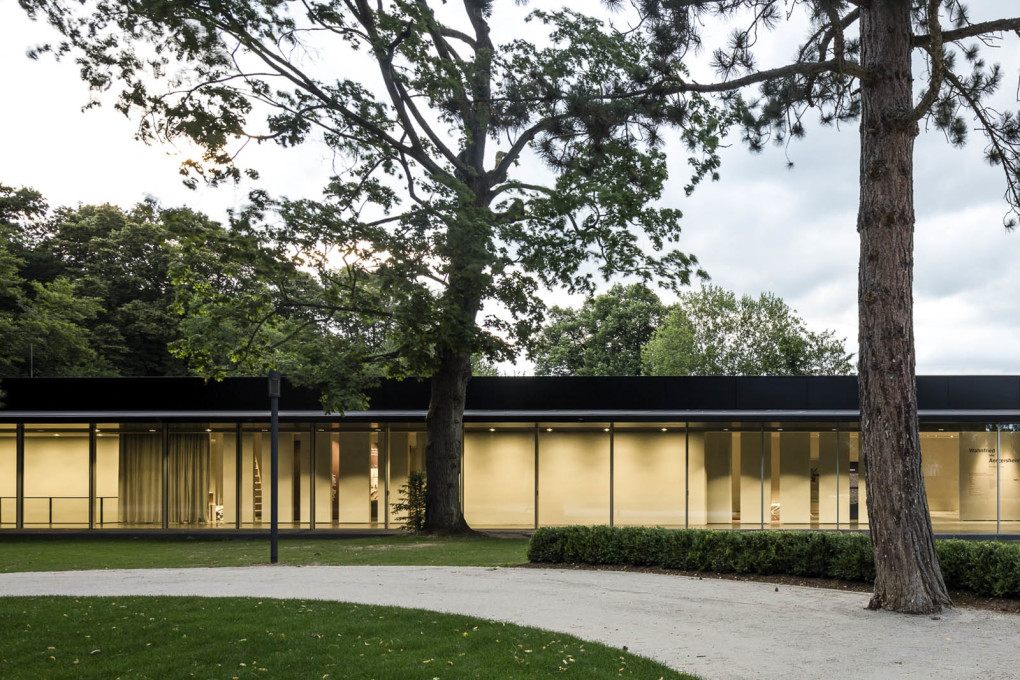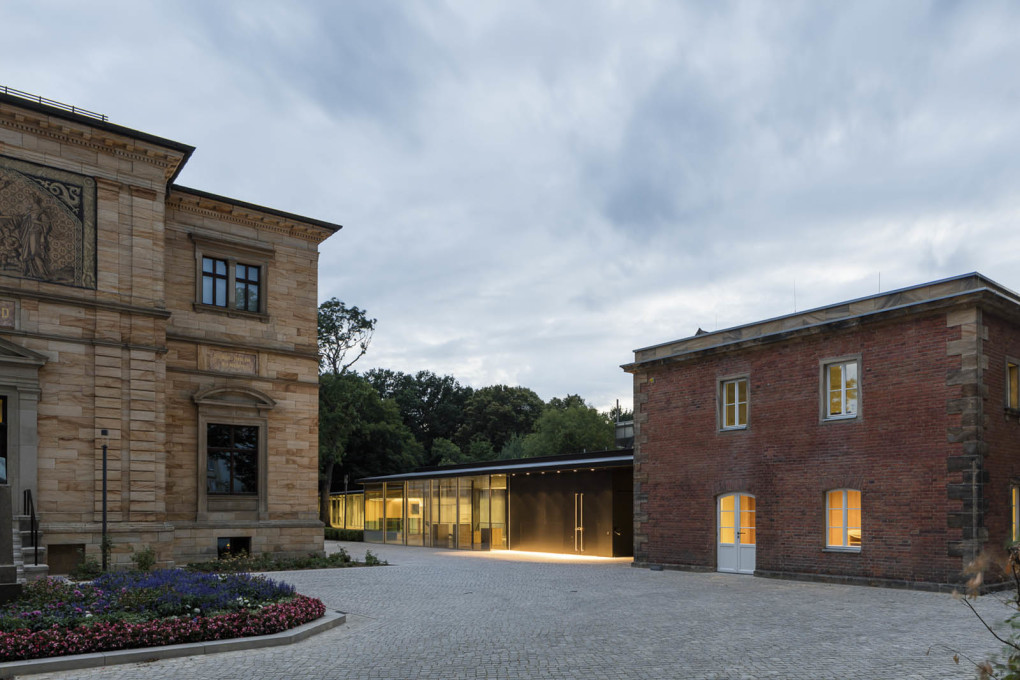After three years and a 20 million euro investment, the renovation of Richard Wagner’s Haus Wahnfried in Bayreuth, in southern Germany was completed in July 2015. As part of the refurbishment, a new extension was constructed by the prolific, Berlin-based Staab Architects which provides a striking modernist counterpoint to the original villa’s neoclassical grandeur. uncube’s Florian Heilmeyer visited the museum and came across a masterclass in contextualised architecture.
Over the past decade or so, Berlin-based Staab Architects have been building at a breakneck pace. Since Volker Staab founded the office back in 1990, it has grown into an architecture factory with around 100 collaborators realising 38 buildings in 26 years. All of these buildings are large or mid-sized which makes it even more surprising that hardly a single one looks like another. Staab likes to call his buildings “kindred objects”, since they all originate from the same principle. Their individual forms and aesthetics are strictly related to the context and conditions of each commission, which includes function and budget as well as structure, materials, history and atmosphere of the surroundings. In his architecture, Staab is a hardcore contextualist which means that sometimes his ability to develop something new out of what is already there leads to a strange paradox: you see a building which is perfectly contemporary and self-confident, yet at the same time is in so intensely interwoven with its surroundings that it almost becomes invisible and you can end up barely noticing it.
Staab’s extension to the Richard Wagner Museum in Bayreuth is a fine example of this spectacular invisibility. It is located in one of those places loaded with German history: the main museum is housed in Haus Wahnfried (a composite name of the German words for madness –Wahn – and peace – Frieden), which was built in 1874 at the behest of Bavaria‘s “fairytale king” Ludwig II (yes, the same guy who built the Disney-influencing fairytale castle, Neuschwanstein). It was to be a gift from the King to his favourite composer Richard Wagner and the design was an amalgam of Wagner’s own ideas, plans by architect Wilhelm Neumann and the builder Carl Wölfel. King Ludwig encouraged the Wagner family to settle in Bayreuth in order to inaugurate their annual Wagner Festival in the new nearby theatre which had also been built exclusively for that purpose – the festival still runs today and is one of Germany’s most important high-society events in the cultural calendar.
When Wagner died in 1883, he was buried in a tomb behind the house, which turned Haus Wahnfried into a pilgrimage destination for all “Wagnerians”, including Arturo Toscanini, Richard Strauss and Adolf Hitler who stayed here overnight in the decades that followed. After the Second World War the villa served as headquarters, casino and brothel for the US Army before it was returned to the Wagner heirs in 1957. In 1976 it became the first public Richard Wagner Museum.
But the term “museum” doesn’t quite hit the nail on the head here; the villa remained under the control of the direct heirs of Richard Wagner who kept the place more as a monument, displaying only a handful of Wagner relics in the dark, laden atmosphere of the grand, dusty rooms with their rich wallpapers and heavy curtains. It was a place orchestrated to make visitors cower in awe instead of critically engaging with and addressing issues such as the latent (or not-so-latent) racism and anti-Semitism in some of Wagner’s work.
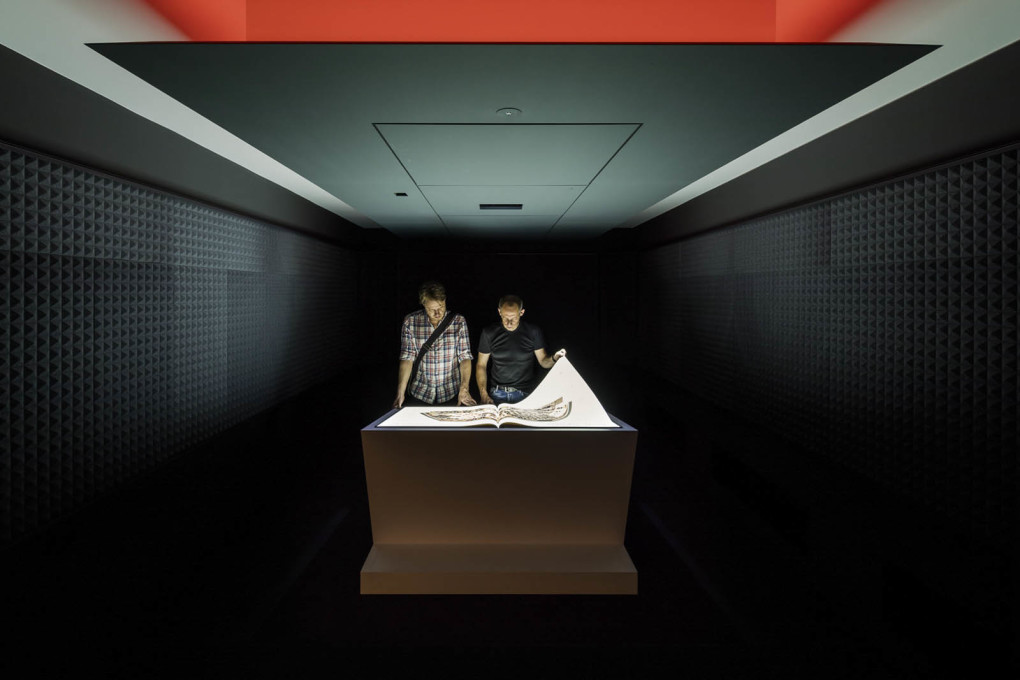
Increasingly under attack for its uncritical displays, the museum’s concept was overhauled in the 2000s, which required not only a renovation of the existing buildings and the surrounding park, but also a small extension providing additional exhibition space and also housing the obligatory functions of a cloak room, ticket office and museum shop. An competition to design these new spaces was held in 2010 and won by Staab Architects.
Staab essentially hid their very modern, light and transparent extension within the complex of heavy, bulky buildings. When you approach Haus Wahnfried by walking a good hundred metres up the historic tree-lined avenue directly towards the villa’s grand old entrance, you hardly notice the new building. Only when you reach the last few metres, taking the path that circles a big bust of Ludwig II, do you see the small pavilion-like building behind the former gardener’s house to the right.
Locating the new building behind the original houses makes it possible to keep the dark, original aura of the place intact and approaching the villa walking down that central axis with the pebbles crunching under your feet still makes a pretty impressive impact, just as it must have had in the days when Richard Wagner was resident here. But at the same time, when you have almost reached the door, it is made absolutely clear that you have to pass by the villa to the right and enter instead into this modest little glass building.
With its dark steel doors and thin columns supporting the roof, set in front of the glass façade, this classically modern, transparent design cites German post-war architects such as Egon Eiermann, Sep Ruf or Mies van der Rohe, thus inserting something new into this neoclassical, heavy landscape of German history. Yet the building refuses to make any moralising comment; it manages to balance the original aura and at the same time breaks its symmetry and turns its organisation upside down, encouraging you to wander much more freely and independently through the surrounding park.
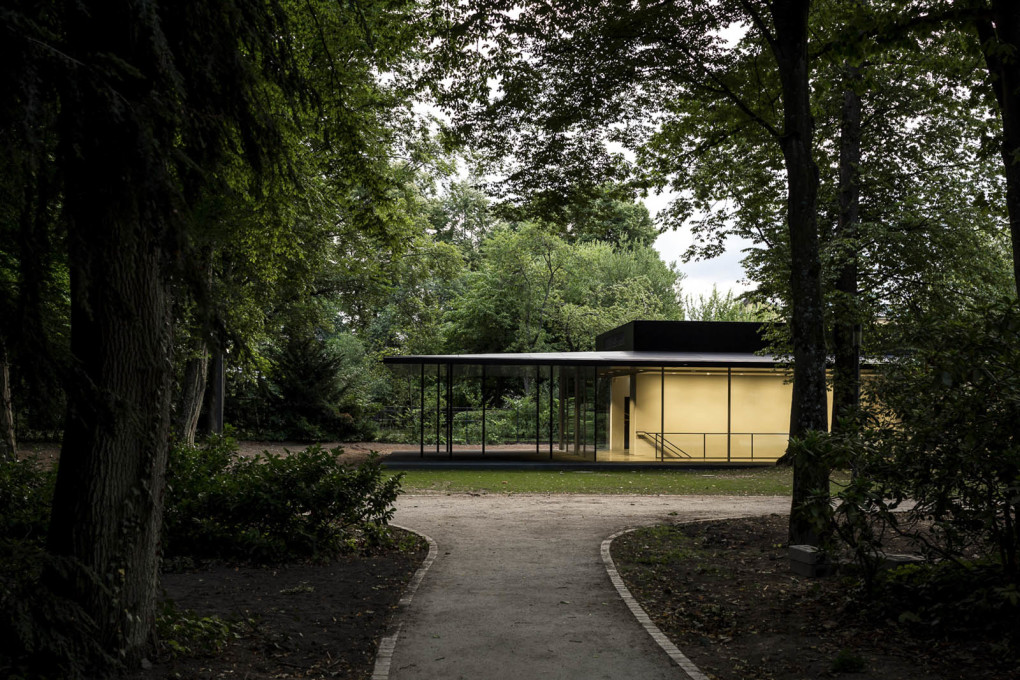
Once inside the building, you realise something else: like a silent, neutral observer the extension maintains a certain distance from Haus Wahnfried. From the modern exhibition space inside you look out through the great glass façade and are suddenly met by the realisation that the park and villa have been transformed by it into exhibition objects themselves. It becomes apparent that the grand entrance you have just experienced is part of the exhibition too, and, now armed with this realisation, you begin a tour that suddenly continues down a broad and comfortable stairway leading below ground. It comes as a surprise that most of the new exhibition spaces are actually underground, but thanks to their generous ceiling heights and a few atria which draw in natural light, the spaces feel surprisingly comfortable.
Only after you have visited this new addition to the ensemble, after you have bought your ticket and maybe even had a nice cup of coffee as well, do you finally enter the old villa with its overabundance of rich colours, textiles and décor. But now, after your brief sojourn through Staab’s modernism and its gift of critically distanced perspective, the villa’s architecture doesn’t feel so overwhelming anymore. To a certain degree you find yourself now immune to all that razzmatazz of the past. Staab’s is an architecture that stays spectacularly invisible, modestly placed to one side of the historic ensemble and at the same time changes the visitor’s entire approach, both physically and mentally. I can’t think of anything more that a piece of architecture could hope to achieve.
All photos by Marcus Ebener




